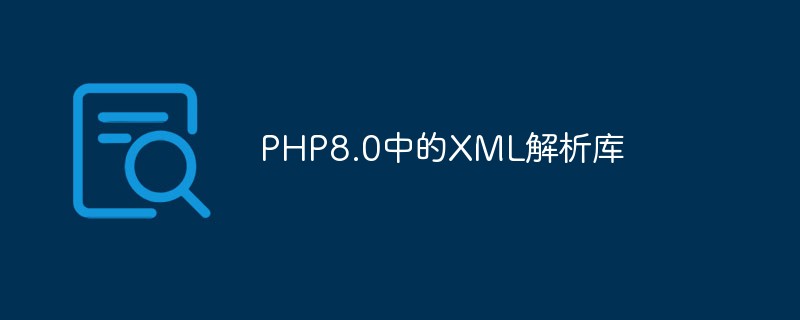 Backend Development
Backend Development PHP Tutorial
PHP Tutorial Parse Baidu search results link?url=parameter analysis (full)_PHP tutorial
Parse Baidu search results link?url=parameter analysis (full)_PHP tutorial
A few days ago, I wrote an article about how to get the URL after Baidu jump. After searching on Baidu, someone also studied Baidu link?url=.
The following results are roughly obtained:
1. The encryption method is based on: random + input residence time + snapshot address for encryption
2. There should be three elements in the entire code Parts: 1. Time of search term; 2. Search keywords; 3. Randomly generated unique identification code.
3. In any environment or browser url = there is a similar code at the end
From the above results of other people's research, we can know that "there is a similar code at the end" is more usable, so we will start with this.
I searched for "enenba" and found that the URL of my first search result had the same code, which was
http://www.baidu.com/link?url=………… ebac5573358cc3c0659257bfcf54763ec1c5ecff3b3fbd1d4c
All search results have a piece of code ebac5573358cc3c0659257bfcf54 (found after searching N times)
The 763ec1c5ecff3b3fbd1d4c at the end looks like the search result Real URL. (It has been verified that it is the ciphertext of the real URL)
I verified it like this:
1. First search www.php100.com on Baidu
The first result link:
http://www. baidu.com/link?url=…………ebac5573358cc3c0659257bfcf546427d385fef6656de2404d6843da27
See the first few 6427d385fef6656de2404d6843da27
2. Search www.hao123.com on Baidu
First result link:
http: //www.baidu.com/link?url=…………ebac5573358cc3c0659257bfcf54 6427d385e6ff7a6de0434d6843da
See the first few 6427d385e6ff7a6de0434d6843da
……
After searching N websites many times, I found that the first few domain names Yes For "www.", the ciphertext is 6427d385
and www. is four characters, and the ciphertext 6427d385 is eight characters. You can know that two characters of the ciphertext are equal to one character of the URL.
So I wrote a php form query and got the ciphertext part for easy viewing later.
Publish the php source code:
/*
getrealurl Get the URL address after 301 and 302 redirection by enenba.com
@param str $url Query
$return str The real url of the directed url
*/
function getrealurl($url){
$header = get_headers($url,1);
if (strpos($header[0],'301') || strpos($header[0],'302')) {
if(is_array($header['Location'])) {
return $header['Location'][count($header['Location'])-1];
}else{
return $header['Location'];
}
} else {
return $url;
}
}
$input = '';
$url = isset($_GET['url'])?$_GET['url']:'';
if(empty($url)) exit($input);
$urlreal = getrealurl($url);
echo 'The real url is:'.$urlreal;
$urlreal = ltrim($urlreal,'http://');
$search = '/ebac5573358cc3c0659257bfcf54( [0-9a-f]+)/i';
preg_match($search,$url,$r);
$url_encode = $r[1]; unset($r);
echo '
The ciphertext part is: '.$url_encode.'
';
$urlreal_arr = str_split($urlreal);
$url_encode_arr = str_split($url_encode,2 ; Research to be continued. . . .
This site declares in advance: The articles on cnbeta are not published by me. My analysis is only based on my own ideas and research. It is just a process. As for whether there are results, I have my own conclusions. Please don't rant.
Continuing from the previous article, I carefully looked at the long code of the Baidu result URL and found that the ciphertext only consists of numbers and letters a to f, which is a hexadecimal code.
Hexadecimal is from 0->1->2->3->4->5->7->8->9->a->b ->c->d->e->f
I collected a series of URLs and counted the first code.
The url corresponding to the XX code is as follows
Copy the code
The code is as follows:
33 0 23 @ 13 P 03 ` 73 p 63
! 32 1 22 A 12 Q 02 a 72 q 62
" 31 2 21 B 11 R 01 b 71 r 61
# 30 3 20 C 10 S 00 c 70 s 60
$ 37 4 27 D 17 T 07 d 77 t 67
% 36 5 26 E 16 U 06 e 76 u 66
& 35 6 25 F 15 V 05 f 75 v 65
' 34 7 24 G 14 W 04 g 74 w 64
( 3b 8 2b H 1b X 0b h 7b x 6b
) 3a 9 2a I 1a Y 0a i 7a y 6a
* 39 : 29 J 19 Z 09 j 79 z 69
+ 38 ; 28 K 18 [ 08 k 78 { 68
, 3f - 3e = 2e M 1e ] 0e m 7e } 6e
. 3d > 2d N 1d ^ 0d n 7d ~ 6d
/ 3c ? 2c O 1c _ 0c o 7c 6c
It is found that it should be a character in an ascii code table, but the order should be confused. But it is all like this in one base:
3->2->1->0-> 7->6->5->4->b->a->9->8->f->e->d->c
four digits In descending order, it can be seen that the overall trend is decreasing.
But what I don’t understand is that the corresponding 0c and 73 are adjacent in ascii. There is no way. I can’t see the pattern. Let’s look at the second one. The code for this bit is
ebac5573358cc3c0659257bfcf54XXYY. The url corresponding to the bit code for
YY is as follows:
% 75 5 65 E 55 U 45 e 35 u 25
& 76 6 66 F 56 V 46 f 36 v 26
' 77 7 67 G 57 W 47 g 37 w 27
( 78 8 68 H 58 X 48 h 38 x 28
) 79 9 69 I 59 Y 49 i 39 y 29
* 7a : 6a J 5a Z 4a j 3a z 2a
+ 7b ; 6b K 5b [ 4b k 3b { 2b
, 7c - 7d = 6d M 5d ] 4d m 3d } 2d
. 7e > 6e N 5e ^ 4e n 3e ~ 2e
/ 7f ? 6f O 5f _ 4f o 3f 2f
The secret text of the second group follows the increasing order of hexadecimal.
0->1->2->3->4->5->7->8->9->a->b->c-> ;d->e->f
The overall trend is decreasing.
Look at the third group
ebac5573358cc3c0659257bfcf54XXYYZZ. . . .
Copy the code
The code is as follows:
& 82 6 92 F a2 V b2 f c2 v d2
' 83 7 93 G a3 W b3 g c3 w d3
( 8c 8 9c H ac ae Z be j ce z de
+ 8f ; 9f K af [ bf k cf { df
, 88 - 89 = 99 M a9 ] b9 m c9 } d9
. 8a > 9a N aa ^ ba n ca ~ da
/ 8b ? 9b O ab _ bb o cb db
Does not explain the upper order:
4->5->6->7->0->1->2->3->4->c->b->e->f- >8->9->a->b
Overall, it is increasing
I haven’t looked at the following digits, but I can probably tell that it is a group of four digits. Hexadecimal confusion , as for whether it is increasing or decreasing, a certain amount of data is needed to determine.
To be continued.
http://www.bkjia.com/PHPjc/326056.html
www.bkjia.com
true
http: //www.bkjia.com/PHPjc/326056.html
 Python编程解析百度地图API文档中的坐标转换功能Aug 01, 2023 am 08:57 AM
Python编程解析百度地图API文档中的坐标转换功能Aug 01, 2023 am 08:57 AMPython编程解析百度地图API文档中的坐标转换功能导读:随着互联网的快速发展,地图定位功能已经成为现代人生活中不可或缺的一部分。而百度地图作为国内最受欢迎的地图服务之一,提供了一系列的API供开发者使用。本文将通过Python编程,解析百度地图API文档中的坐标转换功能,并给出相应的代码示例。一、引言在开发中,我们有时会涉及到坐标的转换问题。百度地图AP
 Python解析XML中的特殊字符和转义序列Aug 08, 2023 pm 12:46 PM
Python解析XML中的特殊字符和转义序列Aug 08, 2023 pm 12:46 PMPython解析XML中的特殊字符和转义序列XML(eXtensibleMarkupLanguage)是一种常用的数据交换格式,用于在不同系统之间传输和存储数据。在处理XML文件时,经常会遇到包含特殊字符和转义序列的情况,这可能会导致解析错误或者误解数据。因此,在使用Python解析XML文件时,我们需要了解如何处理这些特殊字符和转义序列。一、特殊字符和
 使用Python解析SOAP消息Aug 08, 2023 am 09:27 AM
使用Python解析SOAP消息Aug 08, 2023 am 09:27 AM使用Python解析SOAP消息SOAP(SimpleObjectAccessProtocol)是一种基于XML的远程过程调用(RPC)协议,用于在网络上不同的应用程序之间进行通信。Python提供了许多库和工具来处理SOAP消息,其中最常用的是suds库。suds是Python的一个SOAP客户端库,可以用于解析和生成SOAP消息。它提供了一种简单而
 PHP8.0中的XML解析库May 14, 2023 am 08:19 AM
PHP8.0中的XML解析库May 14, 2023 am 08:19 AM随着PHP8.0的发布,许多新特性都被引入和更新了,其中包括XML解析库。PHP8.0中的XML解析库提供了更快的解析速度和更好的可读性,这对于PHP开发者来说是一个重要的提升。在本文中,我们将探讨PHP8.0中的XML解析库的新特性以及如何使用它。什么是XML解析库?XML解析库是一种软件库,用于解析和处理XML文档。XML是一种用于将数据存储为结构化文档
 使用Python解析带有命名空间的XML文档Aug 09, 2023 pm 04:25 PM
使用Python解析带有命名空间的XML文档Aug 09, 2023 pm 04:25 PM使用Python解析带有命名空间的XML文档XML是一种常用的数据交换格式,能够适应各种应用场景。在处理XML文档时,有时会遇到带有命名空间(namespace)的情况。命名空间可以防止不同XML文档中元素名的冲突,提高了XML的灵活性和可扩展性。本文将介绍如何使用Python解析带有命名空间的XML文档,并给出相应的代码示例。首先,我们需要导入xml.et
 PHP中的单点登录(SSO)鉴权方法解析Aug 08, 2023 am 09:21 AM
PHP中的单点登录(SSO)鉴权方法解析Aug 08, 2023 am 09:21 AMPHP中的单点登录(SSO)鉴权方法解析引言:随着互联网的发展,用户通常要同时访问多个网站进行各种操作。为了提高用户体验,单点登录(SingleSign-On,简称SSO)应运而生。本文将探讨PHP中的SSO鉴权方法,并提供相应的代码示例。一、什么是单点登录(SSO)?单点登录(SSO)是一种集中化认证的方法,在多个应用系统中,用户只需要登录一次,就能访问
 PHP 爬虫实战之获取网页源码和内容解析Jun 13, 2023 am 10:46 AM
PHP 爬虫实战之获取网页源码和内容解析Jun 13, 2023 am 10:46 AMPHP爬虫是一种自动化获取网页信息的程序,它可以获取网页代码、抓取数据并存储到本地或数据库中。使用爬虫可以快速获取大量的数据,为后续的数据分析和处理提供巨大的帮助。本文将介绍如何使用PHP实现一个简单的爬虫,以获取网页源码和内容解析。一、获取网页源码在开始之前,我们应该先了解一下HTTP协议和HTML的基本结构。HTTP是HyperText
 PHP中的HTTP Basic鉴权方法解析及应用Aug 06, 2023 am 08:16 AM
PHP中的HTTP Basic鉴权方法解析及应用Aug 06, 2023 am 08:16 AMPHP中的HTTPBasic鉴权方法解析及应用HTTPBasic鉴权是一种简单但常用的身份验证方法,它通过在HTTP请求头中添加用户名和密码的Base64编码字符串进行身份验证。本文将介绍HTTPBasic鉴权的原理和使用方法,并提供PHP代码示例供读者参考。一、HTTPBasic鉴权原理HTTPBasic鉴权的原理非常简单,当客户端发送一个请求时


Hot AI Tools

Undresser.AI Undress
AI-powered app for creating realistic nude photos

AI Clothes Remover
Online AI tool for removing clothes from photos.

Undress AI Tool
Undress images for free

Clothoff.io
AI clothes remover

AI Hentai Generator
Generate AI Hentai for free.

Hot Article

Hot Tools

PhpStorm Mac version
The latest (2018.2.1) professional PHP integrated development tool

Atom editor mac version download
The most popular open source editor

SublimeText3 Linux new version
SublimeText3 Linux latest version

ZendStudio 13.5.1 Mac
Powerful PHP integrated development environment

mPDF
mPDF is a PHP library that can generate PDF files from UTF-8 encoded HTML. The original author, Ian Back, wrote mPDF to output PDF files "on the fly" from his website and handle different languages. It is slower than original scripts like HTML2FPDF and produces larger files when using Unicode fonts, but supports CSS styles etc. and has a lot of enhancements. Supports almost all languages, including RTL (Arabic and Hebrew) and CJK (Chinese, Japanese and Korean). Supports nested block-level elements (such as P, DIV),





